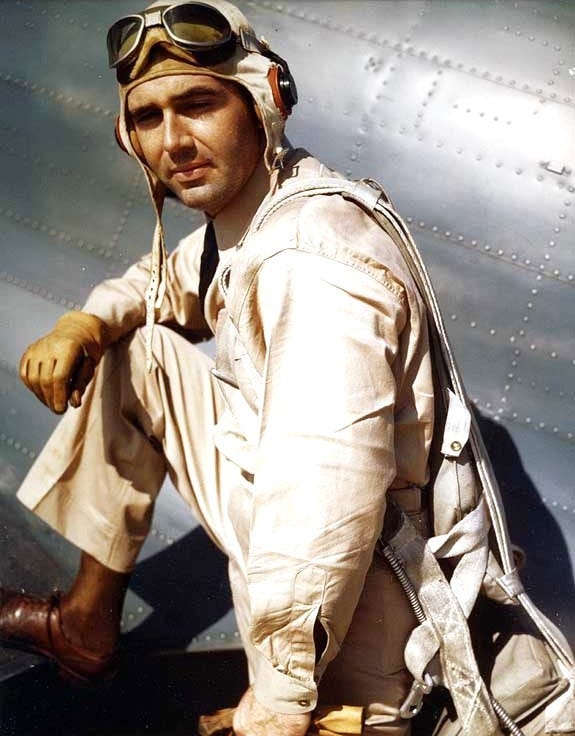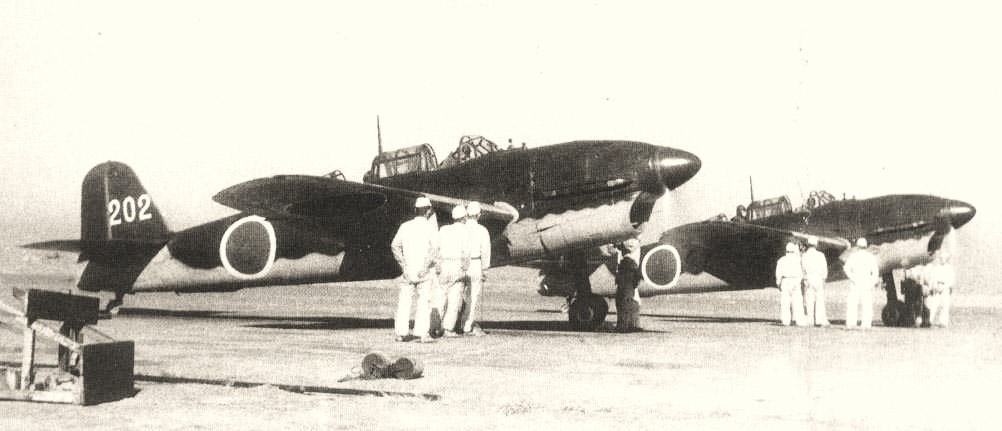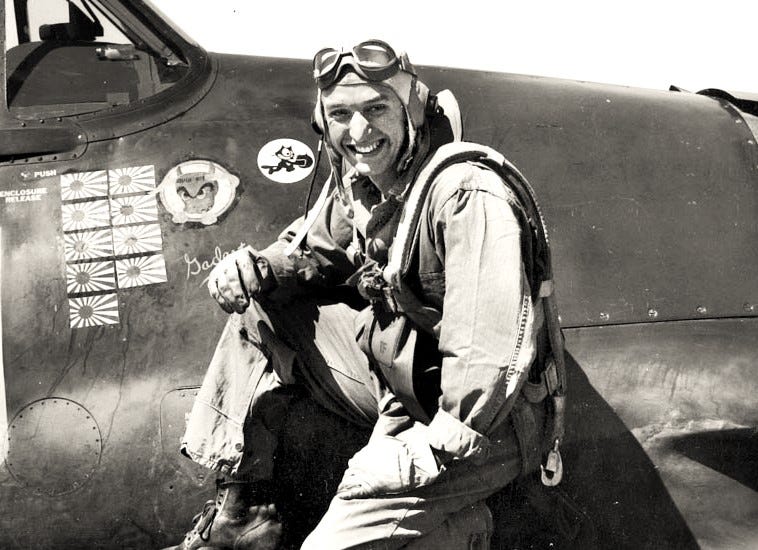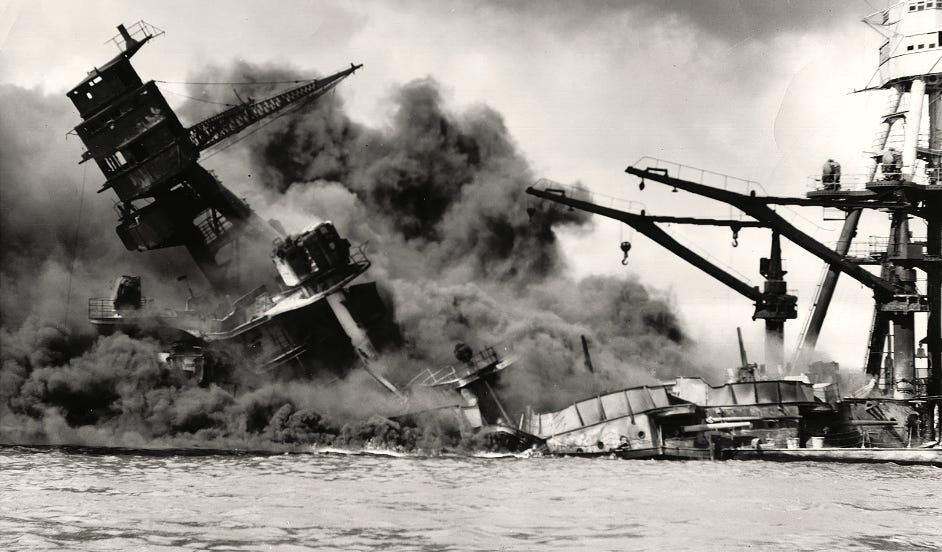Recalling when he heard of Japan’s surprise attack on Pearl Harbor on December 7th, 1941, future US Navy fighter ace, Alexander Vraciu, said he “thought the broadcasters were trying to pull some kind of hoax – Y’know, similar to the one with Orson Welles and his ‘War of the Worlds’…”
Less than a year later, 23-year-old Vraciu had earned his coveted gold wings designating him a naval aviator and, shortly after they were pinned to his chest, was assigned to the revered and battle-proven unit, then designated Fighting Squadron 3.
It was there where he was made wingman to the already legendary pilot, Lieutenant Commander Edward “Butch” O’Hare, the latter of whom not only taught Vraciu his “trade”, but also, how to apply it when he flew his Grumman Hellcat fighter into combat in the summer of 1943.

In the months that followed, Vraciu quickly showed himself as adept in the air as his teacher, and, in so doing, soon distinguished himself in multiple engagements.
Then, however, he was hit by a tragedy that no amount of training could have prepared him for, when, in late November 1943, he learned that his friend and mentor had been reported missing during a night intercept over the Gilbert islands, and presumed killed in action.

Notwithstanding the emotional impact the loss of his comrade had on him, Vraciu had no time to grieve for him.
Instead, he embarked upon mission after mission in his wingman’s name; scored a myriad of victories in his honor; and then, on June 19th, 1944, recorded a triumph that, in later years, he said he “would never have achieved, had it not been for the lessons” he received from "Butch" O'Hare.
Dispatched to defend the US 5th Fleet in the Battle of the Philippine Sea, he not only downed six Yokosuka dive bombers in just 8-minutes but, he succeeded in doing so while suffering from a litany of mechanical failures, which caused oil to spill onto his windshield, and thus, forced him to fly blind in the face of the Japanese.

Although he was then given the opportunity to return home, he chose to remain in the Pacific, where, after he was shot down over enemy-held Luzon on December 14th, 1944, he remarkably evaded capture for more than 5-weeks, and even established his own band of guerrilla fighters there.
Rescued by General MacArthur’s invasion force in January 1945, Vraciu was subsequently shipped back to the United States, where he spent the remainder of the war serving at the Naval Air Test Center in Patuxent River, Maryland, before then retiring as a commander on December 31st, 1963.
Despite being one of America’s highest-scoring airmen with 40 destroyed aircraft to his credit, and, in spite of being one the Nation’s most highly decorated, Commander Alexander Vraciu always maintained that he “never did any more than any other flyer…”
“Our job was to clear the sky”, he said in an interview shortly before his passing on this day in 2015.
“I was just one of the lucky ones who made it back alive.”






